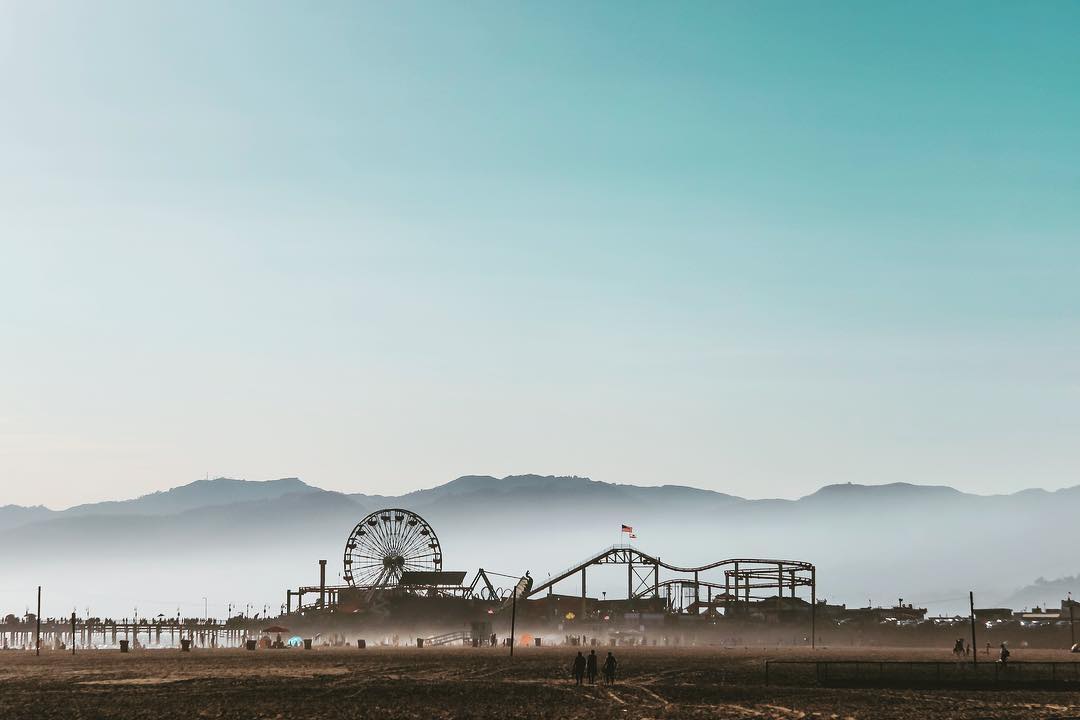Marine Layer in Santa Monica
Published on March 12, 2019
When planning your trip to the beaches of Los Angeles, you may check the weather conditions for forecasted trends and daytime temperatures. During late May and much of June, the valleys and central basin of LA will be warm and sunny, but once you arrive at the beach, the sky will be low and gray. This hazy layer of moisture from the ocean drifts in overnight and lingers by the beach is called the Marine Layer. It can occur at anytime of the year and is usually associated with onshore weather patterns. When there is a morning marine layer, it typically “burns off’ as the day time temps rise and humidity falls, usually around noon. It is most common in late spring and is often referred to by locals as “May Gray” or June Gloom”.
What Is the Marine Layer?
The marine layer is a layer of low altitude atmospheric moisture that forms over the waters of the Pacific Ocean. Coastal areas from Ventura to San Diego can see these hazy, damp conditions early in the morning and occasionally into the afternoon.
Many people mistake the marine layer for smog. While it’s true that smog can become trapped in colder air and become part of the marine layer, smog and the actual marine layer are two different phenomena.
Smog is the result of pollutants and emissions from motorized vehicles, factories, people, and even some animals spilling into the air and being trapped by heat, wind patterns, or clouds. It’s dirty, usually brown or orange in color, and often sits above crowded cities.
The marine layer, on the other hand, is a natural occurrence. It’s usually gray or white in color and will burn off as the day grows warmer.
What Causes the Marine Layer?
The marine layer is caused by temperature inversion, a phenomenon most common over large bodies of water, especially oceans. When the air closer to the ground is cooler than the air above it, the warmer air presses down on it and prevents the cooler air from dissipating. This results in the formation of those cool, hazy clouds that make up the marine layer.
When to Expect the Marine Layer in Santa Monica
You might not have heard of the marine layer, but maybe you’ve heard of May Gray or June Gloom. During May and June, the weather in Southern California is warming up while the ocean temperature is still cold from the winter. These factors create the perfect conditions for those gray and foggy days. Ocean temperatures don’t tend to peak until later in the summer, meaning the marine layer can last for quite a while.
Weather conditions in the greater Los Angeles area are typically very mild with warm temperature year-round. Los Angeles is a large and geographically diverse area with many “micro-climates”. On any given day, there can be sunny & hot temperatures in the valleys, mild and temperate conditions by the beaches, and snow in up the mountains. The marine layer is another unique factor that contributes to this micro-climate effect. If you wake up in Burbank to hot temperatures under a baking sun, by the time you drive to the beach it could be 60 degrees and foggy. These conditions aren’t always forecasted by weather sites, but you can check current conditions on Pacific Park’s live webcams that scan the beaches.
Featured image by @bellehunt.

 SEARCH
SEARCH
